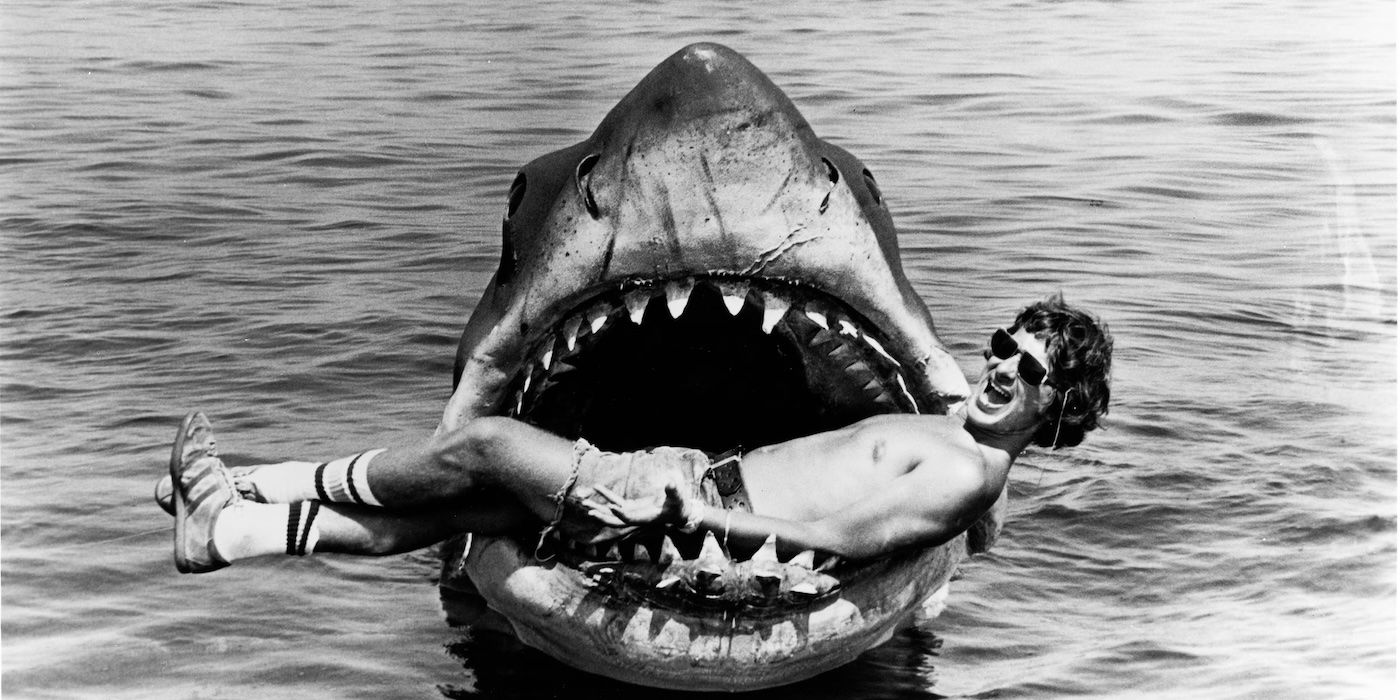Jaws celebrates its 50th anniversary this year with a documentary, Jaws @ 50: The Definitive Inside Story. The title is not hyperbole, as it dives deep into every facet of Jaws, whether it be how author Peter Benchley came up with the title of the novel, the disastrous shooting schedule with a mechanical lead who refused to work, or the impact the film had as the first summer blockbuster.
Jaw @ 50 can’t be told without Steven Spielberg. He’s the star of the documentary, and despite pushing 80 and having talked about Jaws ad nauseam over the last half century, he still comes at it with a newfound passion. No matter how chaotic making Jaws was, he is proud of what he accomplished. Jaws @ 50 offers plenty of insight you may have never heard before. One part of Spielberg’s interview segments discussed how he saved the movie with one simple choice. In the early stages, he was given three different sizes for his great white shark. However, instead of going for the biggest monster possible, Spielberg wisely decided to go with something smaller. It made all the difference in the world.
Steven Spielberg Hired Valerie Taylor To Film a Real-Life Great White Shark
Wanting Jaws to look as realistic as possible, Spielberg decided to work with famed diver and shark expert Valerie Taylor. He wanted her to get footage of her team with actual Great Whites, which is where the scene of Hooper in the shark cage comes from. In a documentary about her life, Playing with Sharks, Valerie said that Peter Benchley’s shark in the novel was 16 feet long, but Spielberg decided to make it a 25-foot shark. She added, “This caused a lot of toing and froing between Universal and Ron (Taylor’s husband).” In the documentary, Ron said he told Spielberg, “There is a problem here. Our white sharks are only about 13 feet long.”
Spielberg’s solution was to put a little person diver in a smaller cage to make the shark look much bigger. That job went to Carl Rizzo, who was not a diver, and he was so terrified that he quickly had the cage pulled up. That ended up saving his life because a shark got stuck in the cage right after and ripped it apart in a moment that was caught on film and used in the movie. But just why did Steven Spielberg decide to go with a Great White so impossibly big to begin with?
There Were Three Different Shark Sizes To Choose From for ‘Jaws’
Part of why Jaws works so well is that we don’t see much of the villain. This wasn’t an intentional choice at first for Spielberg. With Bruce, the mechanical shark, often not working on the day of filming, what Spielberg intended to do had to be scrapped. Instead, the shark became those taunting underwater POV sharks and the iconic score by John Williams. Not seeing the monster made it more terrifying, but still, at some point, we had to see it. That comes in the third act, where we see Bruce in all his glory during the daylight. Fifty years later, the shark still looks and feels so real because it’s actually there.

Related
Steven Spielberg Thought ‘Jaws’ Would be the Last Movie He Would Ever Get a Chance to Make
Thankfully, he was wrong.
The shark in Jaws was designed by Joe Alves. In Jaws @ 50, Spielberg explained how Alves put up three different drawings in the production office, with each full-size drawing being of a different size Great White. One was 18 feet long, the second a 26-footer, and the third measured 32 feet. They then had to decide which size to go with. Spielberg said, “For me, the 18-foot shark was not that intimidating, but the 32-foot-long shark was not realistic. And it would have turned the genre of the film into science fantasy. The 26-foot-long shark was just right.”
‘Jaws’ Made People Think That Great White Sharks Are Bigger Than They Are
Jaws was so terrifying that it affected the collective human psyche. Generations are now afraid to go into the water, and the biggest tragedy of all is that sharks have been overfished because humans see them as monsters. Even if you’re not afraid of the water or you are against killing sharks, there’s still a good chance that Jaws has altered your perception of Great Whites by making you think that they’re bigger than they actually are. A 26-foot-long Great White is not only frightening, but it has also never existed. In reality, male Great Whites are between 11 and 13 feet (the largest male ever recorded was 13 feet 9 inches), and females come in at between 15 and 16 feet. One world-famous female named Deep Blue is an astounding 20 feet long.
Jaws doesn’t succeed without its realism. The idea of a super-smart, giant shark going on a murderous rampage could have been silly, but we buy every second of it because it was not made on a studio backlot but filmed on location in Martha’s Vineyard. Jaws does not feel like a Hollywood production but something more authentic. The same goes for the monster. An 18-foot shark, while huge, would have come across as a little too realistic. At 32 feet, however, you have a shark so ridiculously large that it pushes past the bounds of logic. The Jaws sequels did this, with Jaws 3-D‘s shark being over 30 feet, but rather than being scary, it looks like a bloated whale. But at 26 feet, Jaws had a monster that was bigger and badder than anything else like it, while still being believable. Maybe something like this didn’t exist in real life, but the audience doesn’t know that. We see the shark as being huge, but also as a nightmare that could really be out there. Bruce is almighty, but he’s not absurd.

